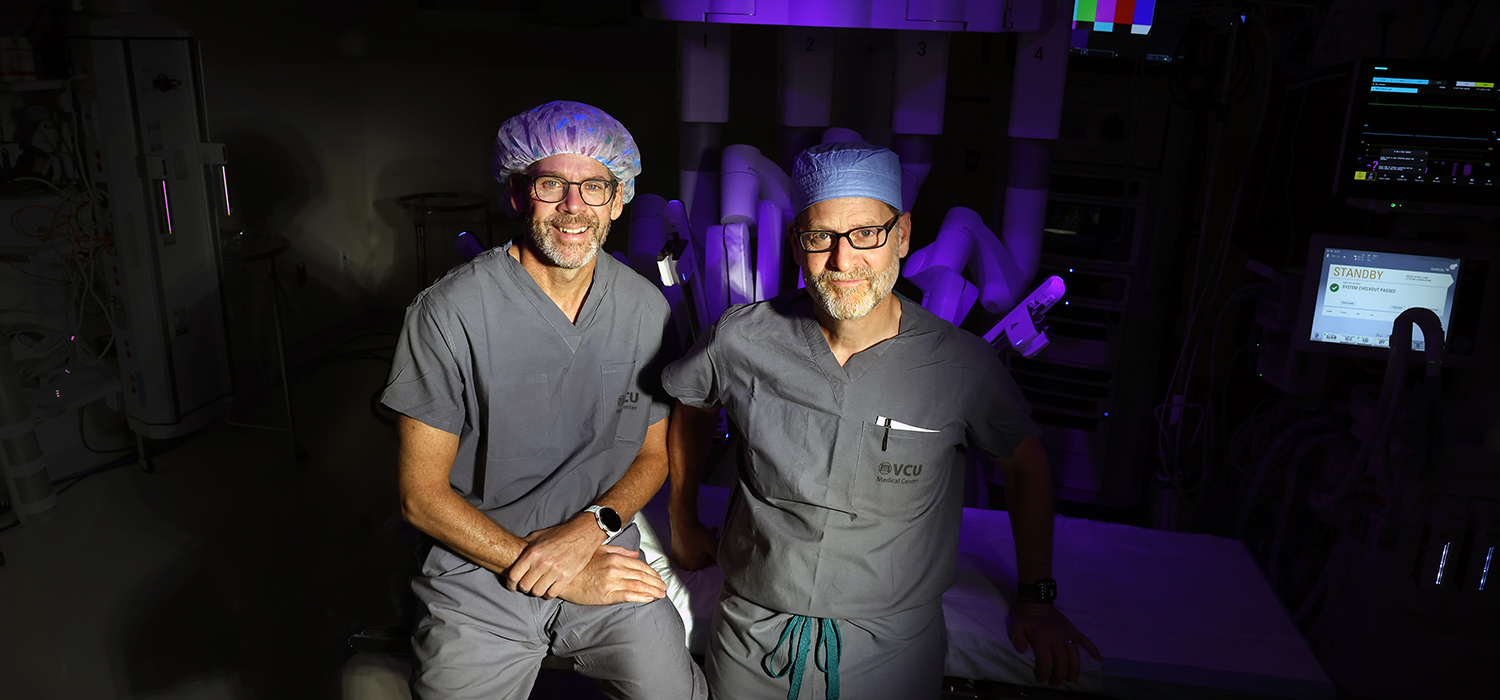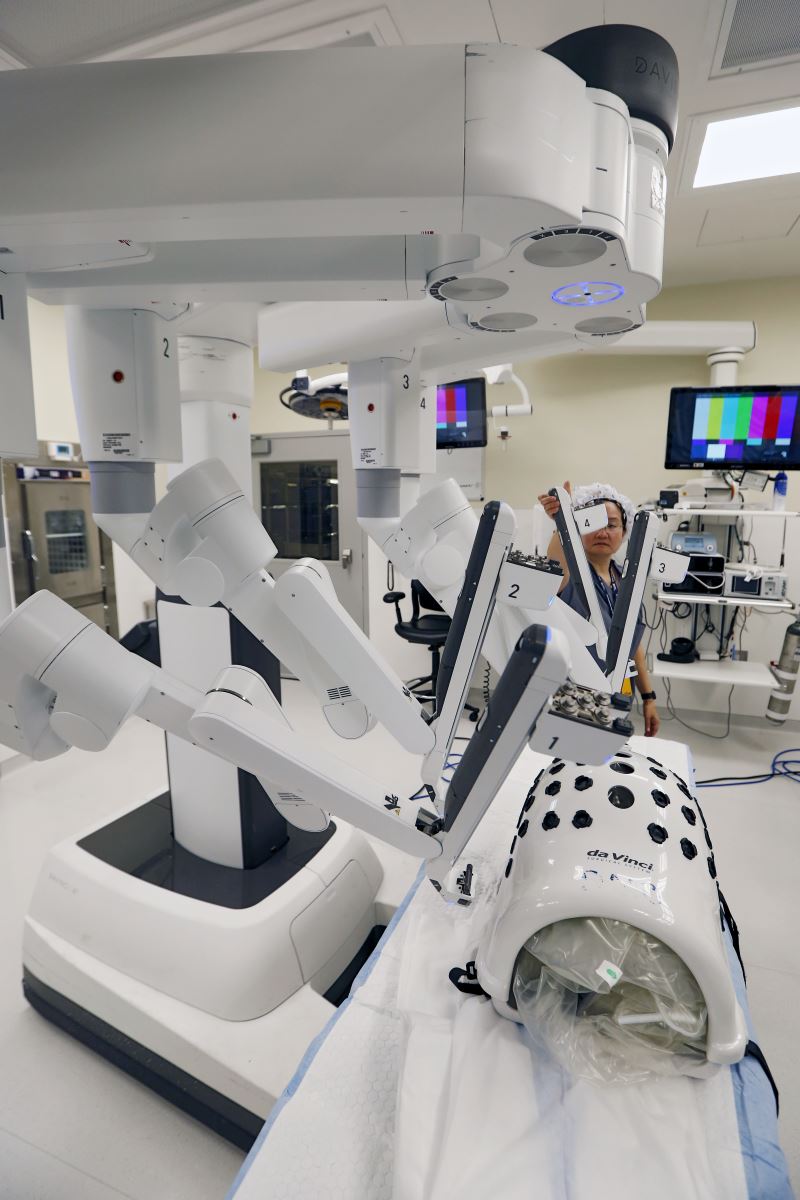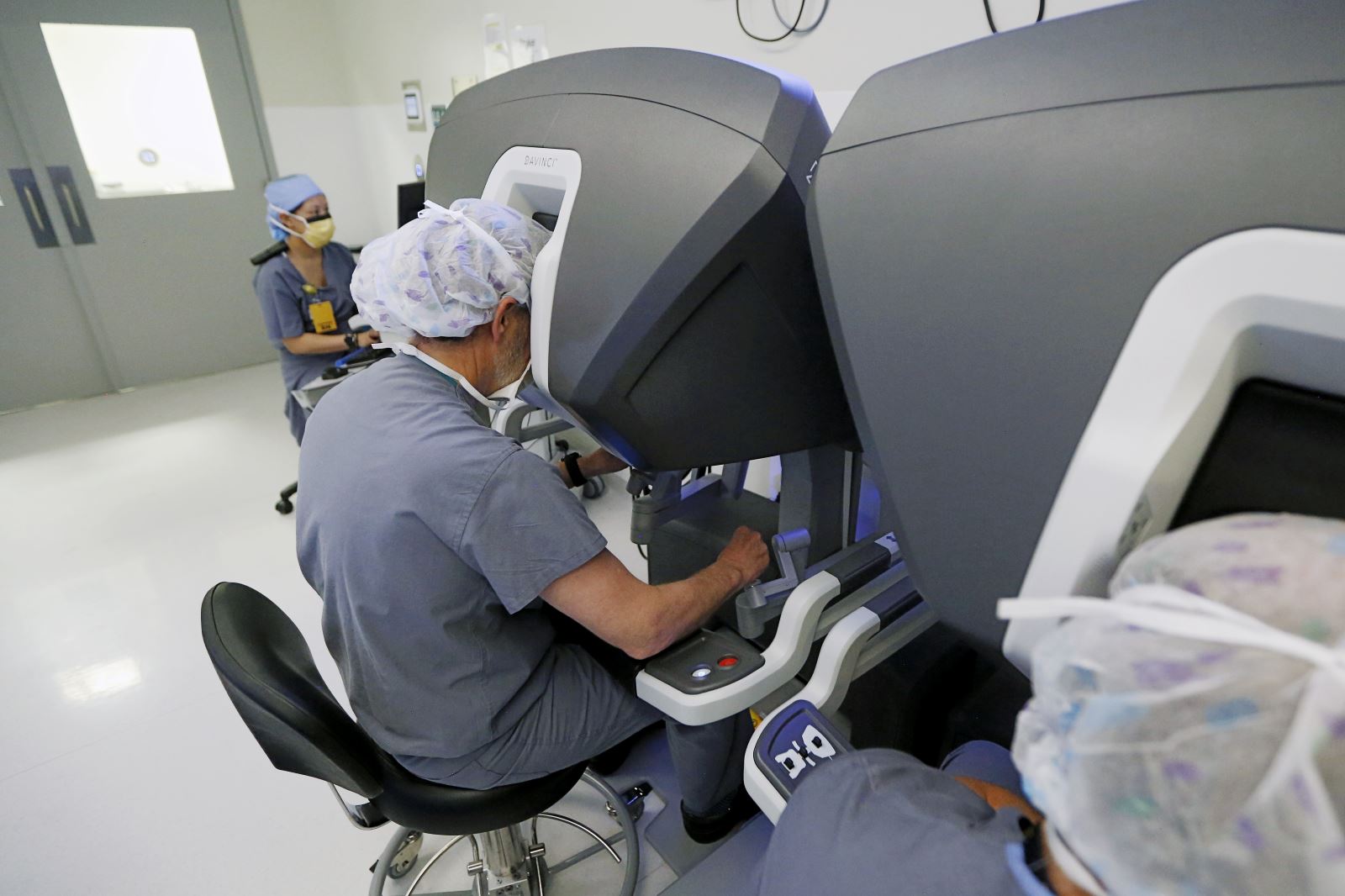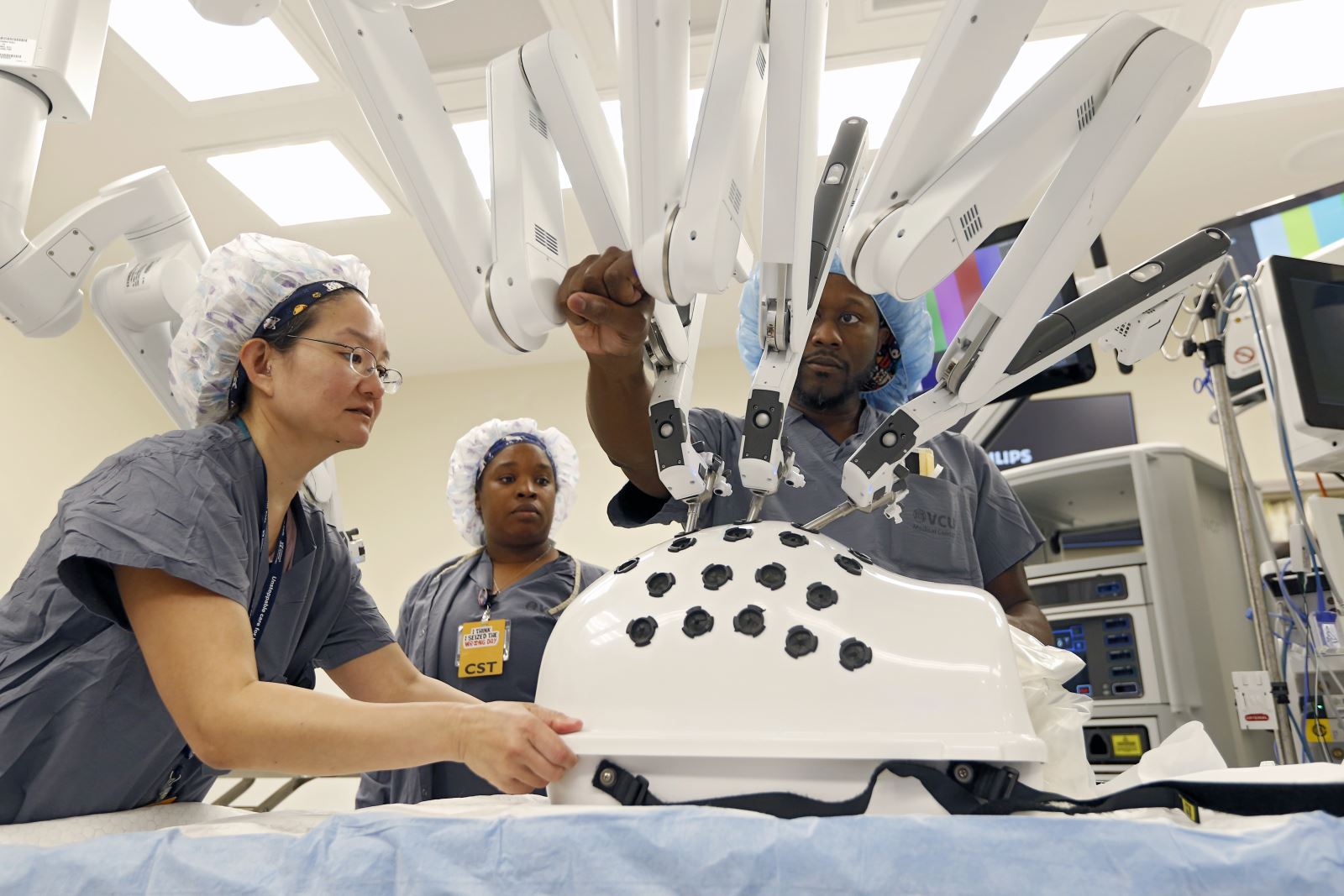
Wall-E and Big Hero 6 aren’t the only robots doing fascinating things when it comes to kids. There is now a robot inside CHoR making operations seem less scary and reducing the recovery time for multiple procedures.
The benefits of robotics in the operating room
Tiny incisions, exact precision and seeing in 3D: those are just a few of the reasons robotic surgery is now being used for even complex surgeries at CHoR.
The surgeons at the helm of the CHoR robotics program are two of our key leaders— Dr. David Lanning, chief medical officer and Dr. Tony Herndon, surgeon-in-chief. Both are frequent users of the robot and are encouraging residents to train so we can expand its use and benefits.
Dr. Lanning earned the distinction of being the first surgeon to use the robot when it came to VCU Health 20 years ago. Until March of this year, pediatric patients were taken to the adult hospital to undergo robotic surgery. Now that we have our own robot, Dr. Lanning uses the technology consistently for bariatric and other complex digestive system surgeries as well as operations in the chest.
Dr. Herndon is not only surgeon-in-chief but also serves as chief of urology. He and members of his team utilize the robot for numerous urology procedures including kidney and bladder operations and clearing blockages.
Very little learning curve and less recovery time with robotic surgery
Despite the technology being so high-tech, Dr. Lanning said it isn’t hard to learn and parents are always eager for it to be used when their child needs surgery.
“The learning curve isn’t as steep as you would think. It is really an intuitive surgical tool,” Dr. Lanning shared. Not only that, “People have heard of the robot being used for adults and once we explain that the visualization is better, as well as the articulating instruments, they’re on board with us utilizing this advanced surgical tool for their child’s operation. Plus, it can be very beneficial with a smaller patient, as the working space is often quite small and the articulating instruments really help.”
And you can’t beat the recovery time.
“When we can do an operation with the robot in a minimally invasive way, and avoid a large incision, the recovery is much improved,” explained Dr. Lanning. “The best example of this is the removal of a large tumor or the thymus gland in the chest cavity. That usually requires cutting through the breastbone for access. However, with the robot, the vast majority of the time we can take it out through several small incisions, and they go home the next day on Tylenol!”
Dr. Herndon explained further how the keyhole incisions provide access traditional surgery doesn’t.
“Those incisions allow us not to cut through tissue and muscle, avoiding the large incision, which leads to less pain and quicker recovery,” Dr. Herndon said. “In fact, many of our patients only spend one night in the hospital.”
How do the doctor and the robot work together?
Unlike what you may see in science fiction movies, the robot is not in control.
“The robot’s not doing the surgery. It’s facilitating the surgeon to do the surgery,” explained Dr. Herndon. “The robot has two components. One is right beside the patient and has four arms, and with those arms you attach the instruments. Those instruments are controlled at a console that’s probably ten feet away. There the surgeon can manipulate the arms or rotate the device to place it precisely where they need it to do the surgery.”
“The instruments have wrists and allow a lot more dexterity for dissection and placing sutures in smaller confined areas,” added Dr. Lanning. “It also has two scopes, so one goes in each eye. It provides the surgeon with a three-dimensional view.”
And while the surgeon is operating the controls at the console, there is always someone immediately next to the patient.
“There’s a surgical assistant that’s always at the bedside,” Dr. Herndon said. “They’re exchanging the instruments and putting them back in, so the robot is not independently functioning.”
Wide-ranging benefits of robotics for surgeons too
Robotics surgery isn’t just easier on the patients, it also reduces the toll long surgeries can take on a surgeon’s body.
“One of the other benefits to the surgeon is that we're sitting down and we have a console that we can look in at an ergonomic, friendly manner,” said Dr. Herndon. “In the past, we're staring at these TV monitors in the operating room and that leads to issues with neck injuries and those sorts of things. The robot has really mitigated those chronic issues that surgeons had to deal with.”
Expanding the use of the robot at CHoR
In addition to Dr. Lanning and Dr. Herndon’s specialties, the robot is in regular rotation for use in general pediatric surgeries as well as operations to address scoliosis and epilepsy.
While CHoR’s robot just arrived a few months ago, its use is increasing exponentially.
“Our robot has two consoles, so we can train our residents as more and more cases are being performed using the technology,” explained Dr. Lanning.
Learn about the types of surgeries we perform at our Level 1 Children’s Surgery Center.
VCU Health is expanding use of robotic surgery through growth and knowledge-sharing.
